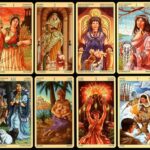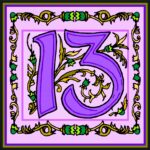In the intricate realm of Tarot, numbers play a pivotal role, resonating with distinct energies and symbolism that enrich readings and interpretations. Each number, from the minor arcana to the major arcana, encapsulates its own set of meanings and influences. This exploration of Numbers Tarot Cards not only elucidates their significance but also provides an extensive overview of how these numerals manifest within the Tarot universe.
The foundations of tarot reveal that every number correlates to a specific archetype or theme, impacting the cards they inhabit. Typically, the interpretations follow patterns that influence both individual readings and collective insights. Understanding the numerology in Tarot expands the reader’s comprehension of the cards and enhances their ability to forecast potential realities.
Let’s delve into the significance of numbers within the Tarot system, starting with the numerals themselves. Each number often has a dual aspect—one positive and the other cautionary. Here’s a breakdown of how the essential numbers manifest within the Tarot cards:
1 – The Initiation
The number one signifies beginnings, leadership, and individuality. In Tarot, it often represents the Ace of each suit—symbolizing untapped potential, new opportunities, and the spark of inspiration. The Aces beckon the querent to embrace new paths and to engage wholeheartedly with the possibilities before them. Conversely, it also warns against impulsivity, urging patience and clarity of vision as one embarks on this new journey.
2 – The Duality
This number embodies partnerships, balance, and choices. In the context of the Tarot, cards such as the Two of Cups convey harmony in relationships and mutual attraction, symbolizing collaboration and understanding. However, the darker aspect of two can oscillate towards indecision or conflict—reminding individuals to weigh their options with discernment.
3 – The Trinity
Three represents creativity, growth, and expansion. Often seen in cards like the Three of Pentacles, it illustrates the fruits of collaboration and the strength found in community. This number encourages exploration of one’s creative impulses. Nevertheless, it can also highlight inexperience or superficiality if energies are not harnessed wisely.
4 – The Structure
Number four embodies stability, foundations, and structure. The Four of Wands and Four of Pentacles depict safety and security. The focus here is on building strong bases, whether in personal endeavors or businesses. On the contrary, it warns against rigidity—encouraging flexibility and adaptation in the face of life’s unpredictable nature.
5 – The Change
Five signifies change, challenge, and conflict. Manifested in the Five of Swords or Five of Cups, this number denotes turbulence and upheaval—a call to embrace transformation. While challenges may seem daunting, they often serve as catalysts for growth. Thus, the dual nature here highlights the necessity to confront difficulties head-on while remaining receptive to learning and evolution.
6 – The Harmony
The number six resonates with harmony, balance, and responsibility. Represented in the Six of Cups, it points to nostalgia, kindness, and the beauty of shared experiences. This number encourages reflection and reconnecting with one’s roots. However, it also suggests the temptation of living in the past, urging one to cultivate balance between remembrance and present reality.
7 – The Contemplation
Seven exemplifies introspection, spirituality, and wisdom. The Seven of Pentacles embodies passivity intertwined with reflection on life’s accomplishments, advocating patience in observing progress. The caution here involves stagnation—reminding querents that contemplating too long may lead to missed opportunities.
8 – The Power
The number eight signifies power, strength, and mastery. Cards like the Eight of Wands depict swift action and momentum, emphasizing achievement and empowerment. This number encourages assertiveness but warns against becoming overly domineering or aggressive. Being mindful of how power impacts interactions is crucial.
9 – The Culmination
Nine embodies completion, fulfillment, and humanitarianism. The Nine of Cups represents emotional satisfaction and the realization of wishes, while also cautioning against complacency. It can serve as a reminder that accomplishment must foster gratefulness rather than entitlement.
10 – The Transformation
As the final number in the cycle, ten embodies cycles and endings leading to new beginnings. The Ten of Swords suggests crises that paradoxically pave the way for rebirth. This number encourages acknowledgment of life’s impermanence while embracing the potential for regeneration and fresh starts.
In addition to these individual meanings, the study of Numbers in Tarot also entails an understanding of how these numbers interact within spreads. The interplay of cards, their numerical values, and the energies they emit can delicately alter the interpretation of a reading, revealing nuanced insights into the querent’s journey.
Furthermore, numerology’s implications resonate beyond the individual card. Continuous patterns might emerge across various readings; paying attention to recurring numbers can lead to deeper symbolic manifestations that merit investigation. Using these numbers intuitively enhances a reader’s craft while encouraging a broader perspective on life events.
In conclusion, the symbiosis between numbers and Tarot enhances the richness of each reading, offering layers of meaning that transcend mere symbol interpretation. By embracing the multifaceted nature of numerological insights, practitioners can sharpen their understanding, and seekers gain profound clarity. Understanding these numerals not only adds dimension to a Tarot practice but also cultivates a deeper connection with one’s own life’s narrative.









Leave a Comment